When is the best time to visit Japan?
The information on this page is based on historical averages and may not reflect current conditions. Please check with local authorities for the latest travel advice.
Read moreThe best time to visit Japan is from late March to early April and from September to November. During spring, the country is covered in swathes of cherry blossom trees, while autumn chooses a new palette as tranquil gardens and parks turn a shade of red, orange and gold. As well as the beautiful foliage, the weather is mild during these periods and pleasant for strolling around the sights.
In major cities like Tokyo, Kyoto and Osaka, your best bet for immersing yourself in the pink tint of sakura season is at the start of April. It’s not an exact science but generally, the milder the climate, the earlier the blossoms open – so bear this in mind when planning your trip. As well as exploring Buddhist temples and Shinto shrines, public bathhouses (sento) and hot-spring baths (onsen) are one of the most therapeutic ways to immerse yourself in the local culture. Japan is also renowned for its flavourful cuisine, so be sure to fill your plate with sushi, udon noodles and tofu between soaking up the sights.
More about the best time to visit Japan
Monthly weather and travel tips for Japan
Japan in January is a relatively chilly affair with temperatures dropping to around 10°C and many parts of the country experiencing snowfall. But between winter festivals, hot springs and skiing, there are plenty of ways to keep warm. Lower crowds combined with consistently impressive sights make it well worth braving the crisp weather in big cities like Tokyo and Kyoto but bear in mind that a lot of businesses close over the New Year period. If you’re adamant about leaving your coat and umbrella at home, the Okinawa Islands in the southwest enjoy semi-tropical weather all year round, with temperatures of up to 18°C.
The Shōgatsu (New Year) festival kicks off on 1 January when everyone unites to wish good health and prosperity upon one another. Head to a snow art festival to observe beautiful ice sculptures of mythological creatures which are illuminated at night. As January is the coldest month of the year, many also take to the slopes to enjoy skiing or snowboarding, with Hakuba and Niseko two of the most popular resorts.
7°C
High
1°C
Low
21 days
Rainfall
As the cold snap continues into February, ski season reaches its peak as blankets of thick, powdery snow are met with more sunshine and slightly warmer temperatures than January. Although the weather is usually sunny and dry, you should pack plenty of warm clothes to cope with the cooler temperatures which average out at around 10°C during the day and 2°C in the evening. There are limited crowds at this time of year, making it a great time to explore the main sights with shorter queues.
February’s highlights include Sapporo’s annual snow festival, attracting two million visitors with its ice sculpting competition, a skating rink and snow slides for kids. Towards the end of the month, plum blossoms begin to appear to signal the start of spring. Head to famous viewing points like Kairaku-en in Mito or Tokyo’s Hanegi Park along with many other gardens and shrines to appreciate the vibrant shades of these colourful trees.
8°C
High
1°C
Low
19 days
Rainfall
March’s main draw is undoubtedly the tradition of hanami, which literally means to look at flowers. It won’t take you long to see what all the fuss is about, with the sakura trees popping up in parks, along streets and riversides. The cherry blossom colours begin to peek through at the beginning of March as the reddish hues spread from south to north, but expect a full-on pink parade as the month draws to a close. It's worth checking the cherry blossom forecasts ahead of time if you want to see the country at its most colourful. These will be available between January and February and will be updated weekly throughout the season.
Anime is a big deal in Japan, so if you’re in Tokyo at this time, it’s worth checking out AnimeJapan – the world’s largest festival devoted to this popular animation style. Daytime temperatures average out at an agreeable 13°C, meaning it’s one of the most enjoyable times to visit the country. If you’re going to be out the whole day, you should pack a relatively warm coat or jumper to wrap up in during the evenings when it gets a bit fresher.
12°C
High
5°C
Low
20 days
Rainfall
A surge of warmer weather throughout the country means April is the ideal time to visit any part of Japan. Cherry blossom season hits its stride in cities like Tokyo and Kyoto, and southern Okinawa’s beach resorts are open for business. While temperatures average out to 19°C during the day, you’ll still want to wear something warmer in the evening when it can get quite chilly.
Die-hard winter sports enthusiasts can still hit the slopes in some resorts, like Niseko which caters for spring skiing. If you’re keen to appreciate the beauty of cherry blossom season in full swing, Tokyo, Osaka and Kyoto offer some of the best hanami (blossom viewing) as flushes of pink cover streets, parks and shrines. However, there are thousands of spots across the country to observe sakura (cherry trees) in bloom. Beware that crowds will swell during Golden Week (29th April to early May) when a number of Japanese holidays take place.
18°C
High
10°C
Low
16 days
Rainfall
As Golden Week festivities spill over into the first week of May, cherry blossoms are at their pinkish peak in the northern region of Hokkaido and average temperatures creep up to a pleasant 23°C. Many Japanese people take the week off work so expect public transport and parks to be busy.
Once the crowds have dispersed, you can enjoy a relatively roomy exploration around main cities like Tokyo, Osaka and Kyoto and enjoy the t-shirt worthy weather. With ski season officially over, hiking is the best way to keep active, with Hokkaido’s mountains and various national parks the best spots for a scenic stroll. Tokyo is filled with festivals during May, including the wild weekend-long Sanja Matsuri where around 100 portable shrines are paraded through the streets. The tail end of the month sees the hugely popular Roppongi Art Night put on its weekend of outdoor installations and live performances, turning the area into one big open-air gallery.
23°C
High
15°C
Low
16 days
Rainfall
By late June, the rainy season (‘tsuyu’) affects most of Japan so packing a waterproof coat and umbrella is strongly advised. The northernmost islands of Hokkaido are the one part of Japan which escape the showers, enjoying sunny weather for most of the month. Down south it will be fairly hot and humid, with rain falling in sporadic tropical downpours and temperatures around 26°C.
Despite the wet weather in central and southern Japan, there’s still plenty to see and do in the big cities. It’s an ideal time to make use of the traditional hot springs known as onsen, where you can soak in geothermally heated waters rich in minerals. There are also plenty of free festivals going on across the country, such as Hyakumangoku Matsuri in Kanazawa where you can observe traditional 16th-century costumes and folk dancing.
26°C
High
19°C
Low
18 days
Rainfall
By July, sunny days are frequent in the north and south, making it perfect for mountain excursions or snorkelling around the Okinawa Islands. Honshu and central Japan are a soggier affair as the rainy season continues. Although it can get very hot and humid in most parts of the country, you can find cooler weather in the northern regions like Hokkaido where temperatures average out to 21°C.
Climbing season officially begins in July, when adventurous types tackle Mount Fuji – the country’s highest peak at 3,776 metres. If you’re around on the last weekend of July, you can catch some of the biggest music acts at Fuji Rock Festival. It’s also the time for popular summer festivals like Gion Matsuri in Kyoto, Tenjin Matsuri in Osaka and hundreds of ‘hanabi taikai’ (fireworks shows) held across the country.
30°C
High
23°C
Low
19 days
Rainfall
A combination of hot, humid weather, school holidays and the start of typhoon season means a visit in August can be quite hectic and overcrowded. Temperatures range between 35°C and 23°C, so be sure to pack plenty of breathable lightweight clothing. The beaches in Ishikari, just outside Sapporo, are very popular this time of year and experience lower humidity than other parts of Japan thanks to the island’s higher altitude.
Due to the sticky and unpleasant weather, it's best to avoid central cities like Tokyo, Osaka and Kyoto, but they still host some spectacular fireworks festivals which are worth checking out if you’re in town. Climbing season is still in full swing, so excursions up to Mount Fuji are still very popular at this time, but expect busy trails during Obon week – one of Japan’s three main holiday seasons.
31°C
High
25°C
Low
18 days
Rainfall
Harsh weather conditions and limited travel options make September a month to avoid for travellers visiting Japan. Although the weather is generally less hot and humid, peak typhoon season will be occurring and usually hits the coasts of Okinawa, Kyushu and Shikoku with hard rain and high winds. With this in mind, always carry an umbrella and check weather forecasts before you head out.
In the north you can experience the first signs of autumn creeping through in Hokkaido’s National Parks, as the leaves turn beautiful shades of red and orange. If you’re in Osaka in the third weekend of September then you’ll witness one of its most energetic festivals – Kishiwada Danjiri Matsuri, while full moon gatherings known as ‘tsukimi’ take place all over the country.
27°C
High
20°C
Low
18 days
Rainfall
October is one of the best times to visit Japan as typhoon season and rainy weather make way for pretty autumn scenery, warm days and mild evenings. Head to Hokkaido’s National Parks to make the most of the season’s glorious shades of red, orange and gold, with O-numa Quasi National Park offering some of the most colourful foliage. Average temperatures range between 22°C and 14°C across all regions, so there’s no need to layer up while you’re exploring.
The pleasant weather brings a big haul of festivities to all corners of the country, including the Matsue Suitōro festival of water and light, Tokyo’s annual performing arts festival (Festival/Tokyo) and Yokohama Oktoberfest. Halloween is also a big deal in Japan, so expect to see thousands of creative costumes around squares and parks come 31 October. Events include flash mobs, street parties and even zombie runs.
22°C
High
15°C
Low
17 days
Rainfall
The sunny weather and wonderfully photogenic autumnal scenery make November one of the best months to visit Japan. Things start to get a little cooler at this time of year, so be sure to pack some extra layers to cope with cooler evenings, particularly if you’re visiting the northernmost island of Hokkaido which drops to around 8°C. The warmest weather can be found in the southern Okinawa Islands, with an average temperature of 22°C.
Mid-November sees the traditional festival of Shichi-Go-San (‘7-5-3’) take place where girls aged seven and three and boys aged five don colourful kimonos and receive blessings at Shinto shrines. You can also catch the last sumo wrestling tournament of the year at Fukuoka as the Kyushu Basho event wows crowds at the Fukuoka Kokusai Center. Kyoto is also worth a visit around this time as its temples and gardens are filled with postcard-perfect scenery.
16°C
High
9°C
Low
17 days
Rainfall
The winter chill is well underway by this time of the year, ushering in the first snowfall, festive illuminations and the start of the ski season in Hokkaido. Average temperatures range between 12°C and 4°C and days are shorter with sunset in Tokyo taking place around 16:30. On the southwest islands, you can still enjoy mild weather reaching 20°C and beaches will be all but empty, but the water may be too cold for more than dipping your toe in.
Many shrines hold New Year’s Eve events on 31 December, and eating buckwheat noodles is a tasty tradition known as ‘toshikoshi soba’ – said to bring luck and longevity to those with the longest noodles. At midnight, temple bells around the country ring out 108 times as part of Joya-no-kane, an annual purifying ritual. Despite the fun festivities, it’s worth bearing in mind that this period is one of the three major travel seasons in Japan, so many businesses may be closed or open for limited hours. Expect transport to be more crowded as well.
9°C
High
3°C
Low
20 days
Rainfall
Weather and temperature in Japan
Although Japan’s climates and weather patterns vary a lot across its regions, the spring season between March and May is always a safe bet to explore this enchanting country. To give you an idea of how the season pans out weather-wise, Tokyo’s average temperature is around 13°C in March, steadily climbing up to 18.5°C in April and 23°C in May. If you’re visiting at the start of the season, it’s best to pack something a bit warmer for the cooler evenings.
| Jan | Feb | Mar | Apr | May | Jun | Jul | Aug | Sept | Oct | Nov | Dec | ||
|---|---|---|---|---|---|---|---|---|---|---|---|---|---|
| Tokyo | High | 9°C | 9°C | 14°C | 18°C | 24°C | 25°C | 30°C | 31°C | 27°C | 22°C | 17°C | 11°C |
| Low | 2°C | 3°C | 7°C | 11°C | 17°C | 20°C | 24°C | 25°C | 22°C | 16°C | 11°C | 5°C | |
| Rainfall | 21 days | 20 days | 21 days | 17 days | 17 days | 19 days | 20 days | 18 days | 19 days | 17 days | 18 days | 21 days | |
| Osaka | High | 9°C | 9°C | 14°C | 19°C | 25°C | 27°C | 31°C | 33°C | 28°C | 23°C | 17°C | 11°C |
| Low | 3°C | 3°C | 6°C | 11°C | 16°C | 20°C | 25°C | 26°C | 21°C | 16°C | 10°C | 5°C | |
| Rainfall | 21 days | 20 days | 21 days | 17 days | 17 days | 19 days | 20 days | 18 days | 19 days | 17 days | 18 days | 21 days | |
| Kyoto | High | 8°C | 8°C | 14°C | 19°C | 25°C | 27°C | 32°C | 33°C | 28°C | 23°C | 16°C | 10°C |
| Low | 1°C | 2°C | 5°C | 9°C | 15°C | 20°C | 24°C | 25°C | 20°C | 15°C | 9°C | 3°C | |
| Rainfall | 21 days | 20 days | 21 days | 17 days | 17 days | 19 days | 20 days | 18 days | 19 days | 17 days | 18 days | 21 days | |
| Sapporo | High | -2°C | -1°C | 4°C | 11°C | 17°C | 21°C | 26°C | 26°C | 23°C | 15°C | 9°C | 2°C |
| Low | -7°C | -7°C | -2°C | 3°C | 9°C | 14°C | 19°C | 20°C | 16°C | 8°C | 2°C | -3°C | |
| Rainfall | 21 days | 20 days | 21 days | 17 days | 17 days | 19 days | 20 days | 18 days | 19 days | 17 days | 18 days | 21 days |
Weather data provided by Forecast.io
Cost of stay in Japan
Want to travel smart? Here, you can check out the average cost of accommodation per night in Japan.
-
0
72
144
216
288
- £90 Jan
- £98 Feb
- £111 Mar
- £118 Apr
- £101 May
- £97 Jun
- £103 Jul
- £100 Aug
- £94 Sept
- £102 Oct
- £106 Nov
- £116 Dec
-
0
72
144
216
288
- £87 Jan
- £89 Feb
- £96 Mar
- £96 Apr
- £96 May
- £88 Jun
- £99 Jul
- £105 Aug
- £84 Sept
- £88 Oct
- £91 Nov
- £118 Dec
-
0
72
144
216
288
- £31 Jan
- £31 Feb
- £33 Mar
- £34 Apr
- £33 May
- £30 Jun
- £34 Jul
- £36 Aug
- £31 Sept
- £32 Oct
- £35 Nov
- £37 Dec
-
0
72
144
216
288
- £214 Jan
- £192 Feb
- £204 Mar
- £203 Apr
- £199 May
- £175 Jun
- £207 Jul
- £232 Aug
- £186 Sept
- £186 Oct
- £199 Nov
- £245 Dec
-
0
72
144
216
288
- £113 Jan
- £105 Feb
- £79 Mar
- £76 Apr
- £84 May
- £74 Jun
- £97 Jul
- £105 Aug
- £83 Sept
- £84 Oct
- £82 Nov
- £117 Dec
The best places to visit in Japan
Check out some of the most popular cities, places to visit and things to do in Japan!
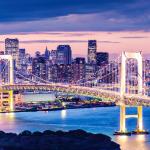
Tokyo
Popular in December
Shopping, Convenient Public Transport, Food

Osaka
Popular in March
Shopping, Food, Local Food
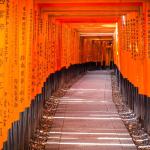
Kyoto
Popular in November
Temples, Culture, History
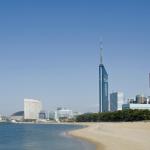
Fukuoka
Popular in December
Food, Shopping, Convenient Public Transport

Nagoya
Popular in August
Local Food, Food, Shopping
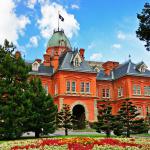
Sapporo
Popular in February
Food, City Walks, Seafood
Ready to book a trip to Japan?
Enter your dates to find the perfect place to stay in Japan!
What other travellers say about their holiday in Japan
-
Kyoto seems very liveable- especially in comparison to Tokyo. People were very friendly and most things were cheap. We found the public transport a little confusing, but taxis (and uber) are widely available and affordable. It was also easy enough to walk around.
Kyoto January 2024 -
I love the weather and Sapporo city. It's basically surrunded by hotels and Malls. Easy for me to find Cafes like Starbucks and other eating places.
Charisma Nelly Sapporo January 2024 -
It is a great location to see Mt Fuji and also to see the other lakes. There is the Sea of Trees forest which was also a highlight. You could stay for longer as there are lots of lovely places to walk and hike.
Fujikawaguchiko January 2024 -
One of the most amazing cities! Eat at Tokyo station! You won't believe the quality and variety. Lots to see and do, great public transport and wonderful to walk around
Tokyo January 2024 -
Great art museum, castle, water as an integral element of the urban feel - this is a great place to visit on its own or a base to make trips to seaside or Daisen-Oki National Park district.
Matsue January 2024 -
Kinosaki onsen is well worth a side trip - it was an amazingly relaxing experience. Great vegetarian food at Gubigabu restaurant, outdoor onsens in icy cold weather an experience not to be missed!
Annabelle Toyooka January 2024
-
The public transport is so convenient. One can go places as far as you want. The food is always the best in Japan.
Frances Ann Tokyo February 2024 -
The location and quiet were most welcome. Our host Marc was extremely patient and helpful, with the best advice given to rent a car as my handicapped husband would have struggled up and down the slopes of Naoshima. It was such a joy to drive around the island at our own time and target, and then to come back to a wonderfully warm and beautiful home. Indeed, just like home! Would be great for a multi-tier family - there’s so much room!
Judy Naoshima February 2024 -
A great hotel just across the road from the train station. Close to other attractions eg the fish market. The room was a great size and big compared to other Japanese rooms we have stayed. The breakfast was wonderful - a mix of Japanese and Western food. The staff were friendly. We wished we could have stayed longer but we only stayed for a night as a stop over.
Vicki Hakodate February 2024 -
A beautiful island. Easy to either drive or go by bus. Lots of bars and restaurants in town. Very nice hotels scattered over the island
Ishigaki Island February 2024 -
It's a beautiful place and will need time to explore. Easy to get on the site seeing bus to go around the lake. Cafes and restaurants are plenty. They even have Halal eateries.
Fujikawaguchiko February 2024 -
This is another world. Worth seeing. Amazing experience with modern set us and ancient history.
Eduard Tokyo February 2024
-
Osaka is a great city. Especially the Doutonbori area is just unbelievable with so much energy and some great food. You should try the Doutonbori Gyozas without fail. We visited Osaka Castle, Umeda Sky building and a few shrines and had a lovely time in Osaka. The Tsunekaku area in shinsekai was good too.
Harish Osaka March 2024 -
Loved the Machiya area - samurai and ninja and geisha history, hidden alleys and other old homes
Robyn Kanazawa March 2024 -
I like that we can easily reach our destinations by taking the train. However it might be a bit difficult to locate the exact exit to exit. Food is great all the time.
Tokyo March 2024 -
The station is super as is the gardens and castle. The market is excellent and opens at 9am, there are two tourist buses but it’s a pretty walkable town
Jillian Kanazawa March 2024 -
Beppu is a nice town in a very interesting area. I arrived there by ferry from Osaka, which is itself a great trip.
Beppu March 2024 -
This hotel is the perfect location if travelling on to another area in Japan. It is fantastic for a "stop over" sleep. Next visit we will stay a little longer and explore the hotel a bit better. Staff were fantastic and the free shuttle from the airport is fantastic as well.
Fern Narita March 2024
-
Conveniently located next to airport. Best for short stays. Many options for food inside and outside the hotel.
Michael Izumi-Sano April 2024 -
I love a bustling city like Tokyo which has everything to offer such as shopping centres, restaurants, train stations where is always on time, very clean city and the important things the local people who proud of their country, super friendly and very helpful when you need something. 3 weeks stayed there still not enough and definitely will coming back!
Sutini Tokyo April 2024 -
Great city. Very walkable. Market area a good central base for key attractions.
Kanazawa April 2024 -
Be ready for crowds. The Kabuki theatre in Ginza was so much fun. There's a basement restaurant around the corner to the left that was absolutely fantastic. Asakusa was full of tourists, and worth visiting. You need at least a week to do Tokyo properly. Disembark at Osaka to avoid the 3 hour processing at Narita. Pay as you go.
Tokyo April 2024 -
The train and cable car were thrilling. The forest surroundings gave the town a cozy feel and kept the air so fresh.. The English Guide Club provided a very knowledgeable guide, Mayumi. I learned much more than what you find in books. The burial site is really amazing - a must see. There are some great coffee shops too. It's worthy of a repeat visit.
Daryll Koyasan April 2024 -
Mount Fuji experience - every step of it (boat, tokeway, train) Hakone open air museum
Jane Hakone April 2024
-
Walking the streets and morning market along riverbank was lovely. Hida Folk village (700y pp) a must, Sarubobo bus to village (100y each ride). Lovely little city in general. Look into bus travel around city, very cheap.
Norm & Kim Takayama May 2023 -
Tokyo is nice for its food and shopping and mount Fuji
Tokyo May 2023 -
Nice city , hope next time can stay longer and visit more places
Fong Kagoshima May 2023 -
I arrived with zero expectations but left with a goal to return permanently in the near future. The people are so polite and respectful, the streets clean, and the train services were extremely reliable. Goes without saying that the food was incredible too, and great value for money in most cases. My only regret is not spending more time in the city to explore more of its districts.
James Tokyo May 2023 -
Interesting place with some nice museums, gardens and temples. There were lots of interesting shops near where we stayed in Motomachi. We could have spent more time exploring the shops and we will go back.
Matthew Kobe May 2023 -
Lots to see in city, as well as an ideal location to day trip to Osaka and Nara.
Larry Kyoto May 2023
-
fabulous tokyo, everything is so beautiful and delicious. will come back
Tokyo June 2023 -
There is a lot to see in Tokyo So I would pace yourself. Don’t feel you can’t just eat at those small 5 bench seat restaurants, they are terrific. Studio Ghibli is a must so book early. Generally, we had a terrific time but suica and jr pass situations got me confused! Buses are direct and east to use.
Tokyo June 2023 -
Matsuyama is such a friendly city. Everyone was so kind. I love the feeling of being in the city.
Felicity Matsuyama June 2023 -
Best city in the world to fit everything you need and desire for traveller
Shen Chien Tokyo June 2023 -
It is a very nice city sounded by rich cultural places and a lot of restaurants.
Somean Nagoya June 2023 -
Tokyo is simply amazing, so many sights to see, things to do and the food is excellent.
Tokyo June 2023
-
Furano is a magical land full of beautiful flower fields and stunning landscapes, the most famous of which is Farm Tomita and its Lavender Ice-cream. Flowerland Kamifurano is just as nice. Not to be outdone is nearby Biei with its picturesque Blue Pond and breathtaking Shirahige Falls. The whole area is a photo bug's dream come true with beautiful shots everywhere you turn.
Furano July 2023 -
Hakone is a peaceful outstation 85km from Tokyo. we drove there by car and also when to Gotemba from there. The place itself was beautiful and had good eateries and the shopping outlets were exquisite and well priced making the experience remarkable!
Raghav Hakone July 2023 -
A great place indeed, neat and lovely! The view is superb! The hosts/owners are very friendly and accommodating. I will definitely comeback here :)
Rea Kobe July 2023 -
You could spent an infinite amount of time in Tokyo and never run out of things to do. However, the absolute musts would be exploring Asakusa, Shinjuku, and Shibuya. Personally, I'd also add visiting a teamlab exhibit and doing some sort of quirky Tokyo activity to the must-do list.
Tokyo July 2023 -
Kyoto is absolutely gorgeous. I could have spent days there just savoring the atmosphere. I went in summer, and the weather was the nicest out of Tokyo and Osaka, and in my opinion, the people were the friendliest out of every where in Japan. There is so much to see that you could write different itineraries for days after days and not run out of things to do, however, I would allocate at least 3 full days in Kyoto (not including day trips).
Kyoto July 2023 -
Osaka is Spectacular. Beautiful clean city. Locals are friendly and polite
Osaka July 2023
-
Amazing city. Definitely you should visit Shibuya, Shinjuku, Ginza, Obaida, Roppongi. I just regret not learning more Japanese to c8nnwct better with locals.
Alejandro Tokyo August 2023 -
First time visiting Tokyo in Summer. It's hot but still great fun.
Steve Tokyo August 2023 -
The hotel was facing a sandy beach, with a traffic light out front for safe access. The beach itself was very clean and the water was warm. Lots of people doing wind and kite surfing, and there were local festivities taking place at the shrine near the hotel. Plenty of restaurants along the road facing the water, so lots of options depending on what you feel like eating.
Yokosuka August 2023 -
I’d go back to experience more culture and food trip.
Osaka August 2023 -
Clean city; a lot to do and can explore. We arrived in the sunmer so it was extremely hot for us to walk around. A lot of people as well because of sunmer break in Japn. We had to wait on the line for 1 hour to get in the mall, and wait another hour to get in Pokemon Center and Nintwndo in Osaka.
Clarideth Osaka August 2023 -
Tokyo is a nice place to visit 🇯🇵 are very friendly and helpful. Needs bigger restaurants to accomodate big familyor groups tourists.
Gladys Tokyo August 2023
-
Favourite city in Japan so far, such a lovely relaxed vibe. We loved the markets-especially Nishiki food market and the Fushimi inari shrine.
Laura Kyoto September 2023 -
Chiba City is a charming destination with much to offer, but it's important to note that some establishments, like hotels, may have strict check-in and check-out times, which can be inconvenient for longer stays. Nonetheless, the city itself has a lot to explore, from its rich cultural heritage to modern attractions like Disney Land. It's worth planning your visit accordingly to make the most of this vibrant and diverse city.
Saeed Chiba September 2023 -
Public toilets were great and everything was mostly clean. However, no sanitary disposal bins in most public toilets which was somewhat concerning and the lack of garbage bins in public areas was somewhat disconcerting - you need to cart you rubbish with you till you do find a bin! The train lines were confusing and took some getting used too.
Elaine Tokyo September 2023 -
I only stayed on the island for one night but it was lovely and peaceful (once the heaps of tourists leave!). It was a nice place to visit after the hustle and bustle of Tokyo.
Joseph Miyajima September 2023 -
Never expected such a atmosphere. One of the best places we have been visited.
Kyoto September 2023 -
The island isn’t big but filled with activities which is great because in just 2/3 days it’s possible to do everything it has to offer. We rented some bikes and used them to travel around, which was fun but I only recommend to someone in good shape because the road are not flat at all, plus wind and sun can make it even tougher. One thing you must try is the ice cream, which is probably one of best I have ever eaten
Oshima September 2023
-
Like any foreigner, I admire the Japanese culture, hard working culture and the infinite politness. It is a pitty that not many contries take it as a model! My favorite places were Odaiba, the Imperial Palace and the Asakusa neighborhood.
Tokyo October 2023 -
One of the great cities of the world. Thoroughly enjoyed our experience there, including meeting the people, tasting the food, viewing the sites and riding public transportation.
Bernard Tokyo October 2023 -
It was a lovely small town, a welcome change from busy cities crowded with tourists. Very relaxing, beautiful hot springs in the middle of town, a charming temple and shrine surrounded by huge cedar trees. We stayed twi nights and really enjoyed it. From Shuzenji station you can take bus to a viewing area where if the weather conditions are right you can view Mt Fuji.
Cynthia Izu October 2023 -
要著夠衫,10月日間只得9度,晚間4度!巴士不准時,旅客經常白等一餐!食物和房間偏貴,性價比不高。舊輕井澤就是一條頗高消費的商店街而已,無甚足觀。
Natasha Karuizawa October 2023 -
Nice “garden” style hotel. Old but has been refreshed. Like the “Club” room with free drinks (not beer) and games. Large rooms. Breakfast not buffet but “set,” and good enough. Not easy to spot entrance off the main road.
Ping-Kheong Karuizawa October 2023 -
Naoshima was great especially all the art venues, which were outstanding. The only disappointment with our stay was that there was nowhere to eat! Only one restaurant was open for the 3 days of our stay and not particularly good food.
Lesley Naoshima October 2023
-
Tokyu Rei was located right next to the railway station which was perfect for our 2 day stay and close to izakaya and other restaurants including good ones in the station. The room (-a deluxe twin) we booked was comfortable, spacious and clean.
Karen Nagano November 2023 -
Many beautifu places to go that I feel I did not have enough time to visit and explore
Kyoto November 2023 -
quarto bom, limpo. A reclamação é que foi cobrado a estadia do hotel 2 dias antes do prazo combinado.
Kawasaki November 2023 -
Lots to do with lots of sights to see. Easy travel to Lake Kawaguchi. Beautiful museums especially Open Air museum which is a must. Glass museum tea house had the best Mont Blanc to my experiences. Delicious sushi at reasonable price. Wish we had planned longer time for this area. Premium outlet at Gotemba!
Hakone November 2023 -
Walking along Narita Omotesando is enjoyable. But hard to find convenient stores and western style cafe.
Narita November 2023 -
Good place of having vacation. A lot of food option.
Eleazar Osaka November 2023
-
Most places are clean, nice people and full of fun and activities to visit . we liked our visit to Oshiage sky tree and shinjuku, asakusa , very accessible to other places such as yokohama and shinigawa,
Aiah venice Tokyo December 2023 -
There were a lot restaurants and shops to visit. It was easy to go around .
Osaka December 2023 -
I didn’t like that the hotel only had 5 washers. The machines did not dry the clothes as expected. They need to upgrade and provide MORE LAUNDRY MACHINES.
Sybil Osaka December 2023 -
Small town, not too busy. Comfortable life, nice local people
Gon Hachioji December 2023 -
We were involved in the 7 bridges bike ride over 2 days so we only stayed in Imabari for one night. If I was to do this trip again I would do it over 3 or 4 days in order to stay a little longer and explore.
Pia Imabari December 2023
More inspiration for your Japan trip
-

Sushi, hot pots and street treats in Tokyo
12 unmissable foods you should seek out in the Japanese capital
-
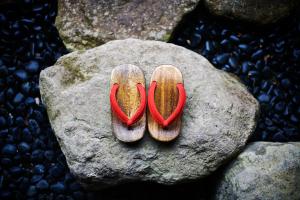
Destination inspiration: Yufu, Japan
Fresh air and even fresher water in the Japanese countryside.
-
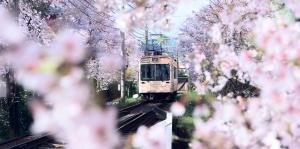
Top places in Japan to see cherry blossom
For picture-perfect pink scenes and picnics, head to Japan for sakura season.
-

Top 10 hotels with the best WiFi in Tokyo
The high-tech futuristic capital where good WiFi is a number one priority.
-

Hakuba’s coolest ski resorts
Carving up 4 of the best ski spots in this one-time Winter Olympic valley.
-

Great rail journeys: the Tōkaidō Shinkansen
Whipping you from the hectic neon of Tokyo to the zen of Kyoto’s temples in record time.
-

Destination Inspiration: Chiba, Japan
Shop ‘til you drop, go meet Mickey, or head to the hills in Chiba.
-
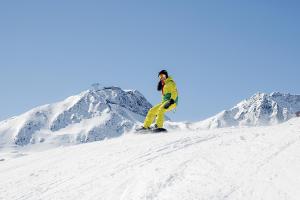
The world’s best snowboarding destinations
Slopes where newbies and old hands can safely snowboard together.
-

Destination Inspiration: Takayama, Japan
Unwind in rural Japan, one bubbling hot spring at a time.
-

The 6 best ski resorts in Japan
Impeccable snow, hot springs and delectable Japanese food awaits.
-
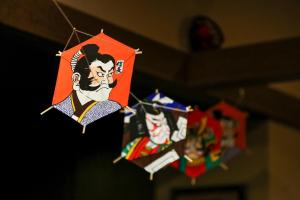
Tokyo’s 6 best overlooked museums
Museums worth a 2nd, 3rd, 4th and 5th look.
-
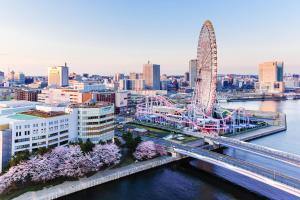
Destination Inspiration: Yokohama, Japan
A relaxing break in Japan’s second largest city.
-

Discover Ōkunoshima, Japan’s rabbit island
It may be dubbed 'rabbit island', but there's more to this island than just rabbits.
-

What to read and watch before visiting Tokyo
Whimsical novellas, gritty film noir, dystopias and dreams of sushi.
-
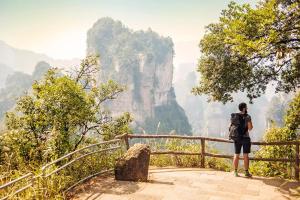
Limitless Travel
Easily unlock new places and experiences…
-

A kawaii tour of Tokyo
The best Tokyo spots to revel in all things kawaii (best translated as 'cuteness').
-
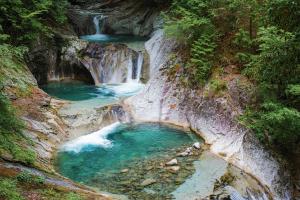
The best of Japan’s natural beauty
Visit valleys glowing crimson with autumn maple trees, and spot rare red-crowned cranes.
-

7 strange and spectacular Japanese islands
Including one home to hundreds of cats and a completely abandoned island.
-
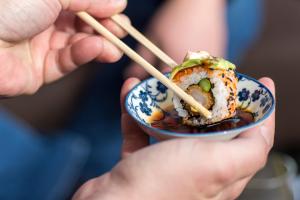
Japan's best cities for sushi
Catch your own squid for fresh sashimi or indulge in expertly prepared omakase.
-

Japan’s 7 best beaches
Take a break from Tokyo and head to a beach in Japan, Asia’s unexpected tropical paradise.
-

A cultural guide to Tokyo
Cultural inspiration for every type of trip to Tokyo; from fish markets to Studio Ghibli.
-

7 stunning places to see spring flowers in Japan
From pink moss fields at the foot of Mount Fuji to an amazing 160-year-old wisteria tree.

